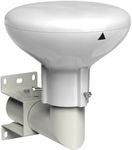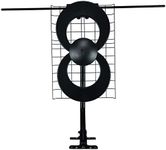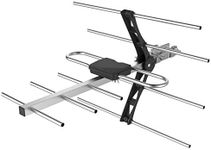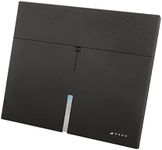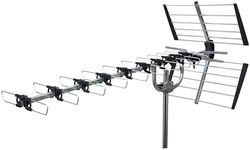Buying Guide for the Best Attic TV Antennas
Choosing the right attic TV antenna can significantly enhance your television viewing experience by providing access to a wide range of channels with clear reception. The key to selecting the best antenna lies in understanding your specific needs, such as the distance from broadcast towers, the type of channels you want to receive, and the physical environment of your home. By considering these factors, you can make an informed decision that ensures you get the best possible reception and channel selection.RangeThe range of an attic TV antenna refers to the maximum distance it can effectively receive signals from broadcast towers. This is crucial because it determines how many channels you can access and the quality of the reception. Antennas are typically categorized by their range: short-range (up to 30 miles), medium-range (30-60 miles), and long-range (60+ miles). To choose the right range, consider the distance from your home to the nearest broadcast towers. If you live in an urban area with towers nearby, a short-range antenna may suffice. However, if you're in a rural area, a long-range antenna might be necessary to capture distant signals.
Frequency BandsTV antennas receive signals on different frequency bands, primarily VHF (Very High Frequency) and UHF (Ultra High Frequency). Understanding these bands is important because different channels broadcast on different frequencies. Some antennas are designed to receive only UHF signals, while others can receive both UHF and VHF. If you want to access a full range of channels, including local networks that might broadcast on VHF, it's best to choose an antenna that supports both frequency bands. Check the channels you want to receive and ensure your antenna is compatible with those frequencies.
Antenna TypeAttic TV antennas come in various types, such as directional, multi-directional, and omnidirectional. This specification is important because it affects how the antenna captures signals. Directional antennas focus on signals from one direction, which can be beneficial if most of the broadcast towers are located in a single direction from your home. Multi-directional antennas can capture signals from multiple directions, making them suitable for areas where towers are spread out. Omnidirectional antennas receive signals from all directions, which is ideal if you have towers located all around your home. Choose the type based on the layout of the broadcast towers relative to your location.
Signal AmplificationSignal amplification refers to the ability of an antenna to boost weak signals, which can be crucial in areas with poor reception. Amplified antennas have built-in signal boosters that enhance the strength of incoming signals, potentially improving picture quality and increasing the number of channels you can receive. However, amplification can also introduce noise, so it's not always necessary if you already have strong signal reception. Consider an amplified antenna if you are far from broadcast towers or if there are obstacles like buildings or trees that might weaken the signal.
Installation and SizeThe installation process and size of an attic TV antenna are important practical considerations. Larger antennas may offer better reception but can be more challenging to install, especially in tight attic spaces. Some antennas are designed for easy installation with minimal tools, while others might require more effort and expertise. Consider the space available in your attic and your comfort level with installation when choosing an antenna. If you have limited space or prefer a simpler setup, look for compact models that are easy to install.
